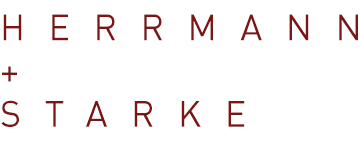Last updated: October 2025
Many of my consulting clients have found the following exercises, guides & resources valuable:
Self-Awareness Exercises
In his book, What Art Does, avant-garde musician, Brian Eno, quotes the late trumpeter and composer, Jon Hasell, as saying “One of the most important questions you can ask yourself is: What is it that I really like?” This exercise asks you to do just that. It can be especially helpful any time you’re trying to refine your vision, build your portfolio, develop a new style or edit/sequence a new body of work.
Crafting a mission statement can be a great way to delve more deeply into why you’re making the decisions you’re making and hone in on the best path forward for yourself. This exercise is a great first step towards developing a deeper understanding of the purpose behind your work.
This exercise from the 1992 book The Artist’s Way by Julia Cameron, is a startlingly effective way to tap into your subconscious, break through creative blocks, and deepen your sense of clarity and purpose. This link takes you to a short summary of Cameron’s practice as interpreted by Leah Lavelle, founder of Urban Wild Studio, a graphics, illustration and animation studio with hubs in Portland, Chicago and London. You can find plenty of other articles and resources about morning pages by doing a quick search online.
Satisfaction Exercises
A clear understanding of what’s truly important to you lets you make decisions that will increase your chances of a match between your career and your core values.
After finishing your Values Analysis, use this tool to flesh out a vision for the career you’re trying to start, grow, diversify and/or reinvent.
Identify how to increase your career satisfaction by assessing what you want more of and less of as well as what you want to stop and start doing.
Decision Making Exercises
Ideal for making difficult decisions that involve a lot of factors, like changing your job, career or major, moving to a new city, going back to school or transferring to a different one.
Simplify complex decisions by evaluating the criteria that influence the decision and prioritizing them so you clearly understand which truly tip the scales one way or the other.
If you are feeling overwhelmed, paralyzed or unsure where to start, this will help you get moving by getting everything out of your head and into a system that will allow you to organize, prioritize and take action.
Guides
THE ASPIRATIONAL INTERVIEW GUIDE
Interviewing people who have already built the career you aspire to is the perfect way to learn what the experience of living that career trajectory is actually like, gain insights from someone who’s been there and network with people who just might be able to give you a leg up (or a job)!
Understanding the Political, Economic, Social and Technological factors and trends that create opportunities or pose threats for you and for your clients, can help you sense which way the wind is blowing early enough to take preventive action and stay out of the storm!
Identifying your strengths and weaknesses along with the opportunities and threats you might face as you pursue your career can be invaluable. In addition to running a SWOT analysis on yourself, consider running SWOTs on your industry at large, and any new business sectors, technologies or services that you’re thinking about diversifying into.
Resources
A series of ten 5 - 10 minute videos covering the nuts and bolts of self-employment for creative professionals including setting up your business, insurance, tax and accounting basics, understanding your cost of doing business and more!
One of the most common questions asked by visual communicators is cleverly answered in this funny but all too accurate spreadsheet from lettering artist and author, Jessica Hische.
INDUSTRY RESOURCES FOR VISUAL COMMUNICATORS
A list of websites worth exploring and groups that offer in-person networking and community for designers, still and motion photographesr, multimedia artists and other visual communicators.
A book recommendation and a list of groups that offer structured networking opportunities for visual communicators and their clients.
A collection of places that can help you identify people who hire visual communicators along with a summary of the kinds of job titles they’re likely to have.


